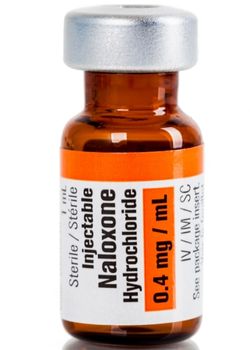It was a day she would never forget. Tammy came home from work and found her husband slouched in the recliner. She thought he was dozing, but then he didn’t respond when she tried to wake him. She tried again. Then she noticed his lips had a blue tint to them, and his breathing was …
Opioid Overdose Emergency: How to Save a Life with Naloxone

It was a day she would never forget. Tammy came home from work and found her husband slouched in the recliner. She thought he was dozing, but then he didn’t respond when she tried to wake him.
She tried again. Then she noticed his lips had a blue tint to them, and his breathing was extremely slow. She put her hand to his cheek, and his face felt clammy.
He was taking painkillers for a back injury, and Tammy knew he had been taking extra pills here and there – more than the doc had recommended. Recognizing the signs of an opioid overdose, Tammy quickly grabbed the naloxone from her purse and sprayed it into her husband’s nose. She then called 911.
The paramedics told her later that her husband wouldn’t have made it if Tammy hadn’t given him the naloxone.
What is Naloxone and Who Can Administer It?
 Nearly 80 percent of opioid overdose deaths happen in a non-medical setting. Settings where there are no doctors, emergency techs, or medical supplies. But one thing is available – naloxone.
Nearly 80 percent of opioid overdose deaths happen in a non-medical setting. Settings where there are no doctors, emergency techs, or medical supplies. But one thing is available – naloxone.
Also known by the brand name Narcan, naloxone is a medication that can reverse an opioid overdose. An overdose occurs when opioids fully block the brain’s receptors. This blockage causes breathing to slow down and then stop.
Naloxone clears the brain’s receptors of the opioids so breathing can return to normal. It can literally save the person’s life.
A prescription is not required to purchase naloxone. It is available at most pharmacies, and anyone can carry it. It’s easy to use, so anyone can administer it when someone is experiencing an opioid overdose.
Who Should Carry Naloxone?
You may want to consider keeping naloxone on hand if any of these situations apply to you:
- You or a loved one is taking an opioid pain medication such as Vicodin, OxyContin, Codeine, or Percocet.
- You suspect your loved one may be struggling with opioid addiction or is misusing a prescription or other opioids.
- A loved one has recently received treatment for an opioid addiction.
- You want to be prepared to help save a life in your community if the situation arises.
When Should You Use Naloxone?
If you suspect someone is overdosing from opioid use, give them naloxone. The medication is not known to cause any harm if it turns out the person was not overdosing, so it’s best to go ahead and administer it.
Look for the following symptoms of overdose:
- Slow or erratic breathing, or breathing has stopped
- Non-responsive to their name or firm knuckle-rub to the chest
- Blue lips and fingertips
- Clammy face
- Paleness
- Deep snoring or gurgling sound
- Slow heartbeat or no heartbeat
How to Save a Life With Naloxone
If you suspect an overdose, take the following steps immediately:
-
 Call 911: If the person is unresponsive, call 911. Try to get their attention by calling their name and telling them you’re going to call 911. Rub their chest firmly with your knuckles to try to wake them. If they are unresponsive to these attempts, call 911.
Call 911: If the person is unresponsive, call 911. Try to get their attention by calling their name and telling them you’re going to call 911. Rub their chest firmly with your knuckles to try to wake them. If they are unresponsive to these attempts, call 911.
Put the person on their side with their legs bent and their head resting on the arm that is on the floor. This position will prevent them from choking if they vomit.
- Administer Naloxone: Depending on the delivery method used, you will administer naloxone in one of the following two ways.
- Spray bottle: Insert the spray nozzle into either nostril and spray the medication into the person’s nose.
- Auto-injector: Remove the injector from its outer case. Remove the safety guard. Place the injector against their outer thigh, through clothing if needed. Press firmly and hold for 5 seconds.
- Apply Rescue Breathing
If the person is not breathing or is struggling to breathe, conduct rescue breathing. Place them on their back. Tilt their head back, pinch their nose, and breathe one slow breath into their mouth every 5 seconds. Their chest should rise and fall with each breath.
- Provide Support
When the person starts breathing on their own, roll them back onto their side and wait for paramedics to arrive. Keep in mind the person may feel sick, confused, and upset. Offer comfort and reassurance while you wait with them for emergency responders. And do not let them use any drugs.
- Follow Up
After they have recovered from the overdose, have an honest but loving conversation with them about the situation. This may be a good opportunity to suggest getting treatment for opioid abuse or addiction.
Get help today at 800-934-1582(Sponsored) to learn about treatment programs for drug and alcohol addiction.
the Take-Away
